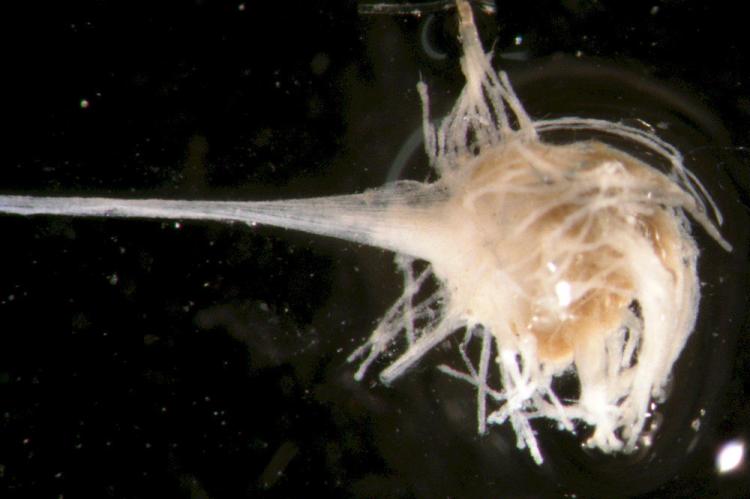Meat eating sponge discovery
Carnivorous sponges, globe-trotting tuna and an eerie underwater “dead zone” at the epicentre of last year’s tsunami are a few of the surprises that have turned up in the first census of the world’s oceans, and more may lie ahead.
Concluded in 2010, CoML was a broad global initiative that supported research at the frontiers of our oceans: the hottest undersea vents, the deepest and darkest depths, the rapidly changing poles, and the most interesting biological “hotspots.” CoML projects engaged more than 2000 scientists and marine professionals from 80 countries in a ten-year effort to assess and explain the diversity, distribution and abundance of marine life in the world’s oceans – past, present and future.
Having reached the midpoint of the unprecedented 10-year census, which involves scientists in more than 73 nations, it is reported that the 230,000 marine species now known to science are the tip of the iceberg. By the time the census is completed in 2010 it is expected that a million new species will have been collected. Most new species are likely to be very small though this is no surprise in an environment where 90 percent of the living mass is microscopic.
Dead zones
A puzzling find was the discovery of “dead zone” near the epicentre of the December 2004 earthquake and tsunami in the Indian Ocean where thick silt seems to have destroyed all signs of life. That area is very puzzling. It is a place on the ocean floor where there is absolutely no life visible - no crabs, no starfish, no tubeworms, nothing.
New technology
The pace of discovery in the census is due in part to the fact that scientists, equipped with deep-diving robotic vehicles and new technology, are looking for life where few have looked before—abyssal plains miles below the surface, polar seas and remote underwater mountain ranges. By satellite, too, scientists are already tracking more than 21 species of fish, turtles and sea lions.
In a midway tally of the census findings so far, more than 40,000 species have been identified many new to science, and a surprising amount of diversity in regions once thought to be bereft of much sea life.
The Census
The census grew out of a 1995 report from the National Academies of Science describing a startling level of ignorance about ocean biodiversity. The deep-sea floor covers nearly 116 million square miles at an average depth of 2.5 miles.
The area the census has sampled so far would cover only a handful of football fields. In gathering their data, scientists are focusing on biological hot spots and sampling those. That directs their focus to coastlines, continental shelves and undersea features such as submerged mountains or mid-ocean ridges where the earth’s crust is being renewed.
Ocean census expected to collect a million new species
Mid-Atlantic ridge
Tallying life along the mid-Atlantic ridge, for example, involves 115 scientists from 14 countries. The ridge supports an abundance of life that turns the waters above it into a refueling stop for whales, sharks, tuna and migratory fish that live closer to the surface. The team’s vessel uses high-resolution sonar to spot fish more than a mile below the surface, then rolls out large nets. The nets, designed to close at different depths, allow the team to sample waters at various levels within their broad zone of interest.
At great depths, some fish are snakelike, sporting large heads with sharp, curved teeth. Many dangle luminescent lures to draw prey. Others light up to attract mates or startle predators. All are extremely fragile. With nothing more solid than one another to bump into, these creatures die when coming into contact with the nets. Their fragility also makes tagging them impossible, although researchers are working on ways to do that.
Though results so far aren’t enough to allow researchers to create a meaningful picture of the whole ocean, planners expect that to change in the next five years.


